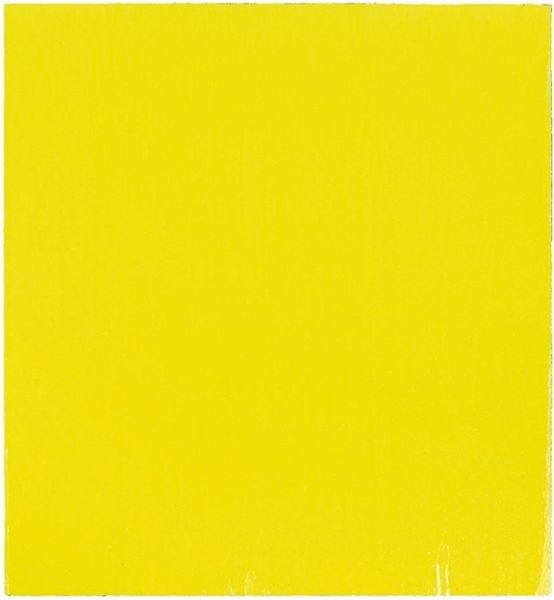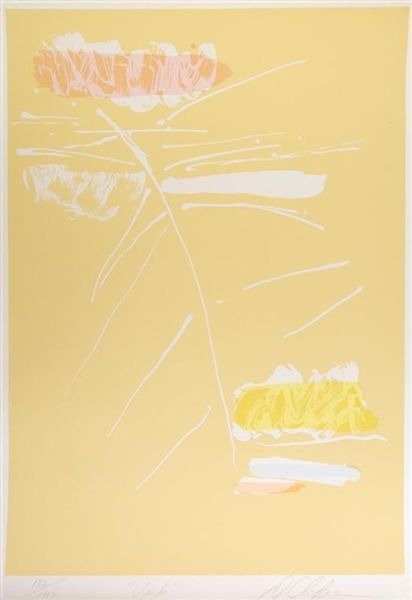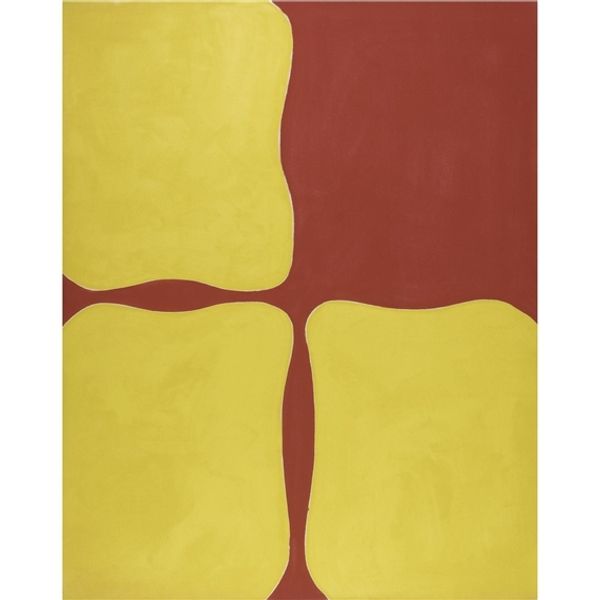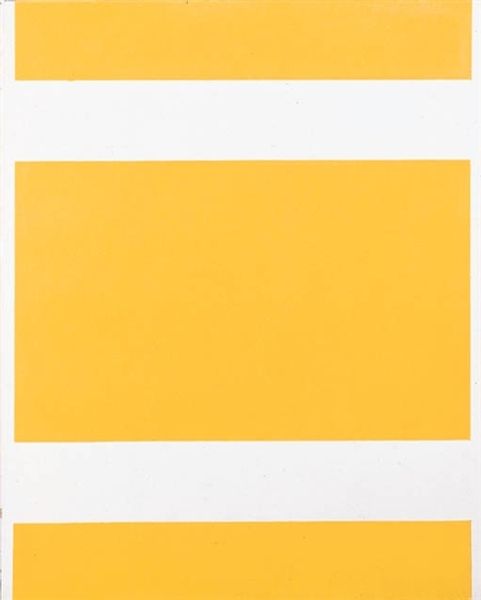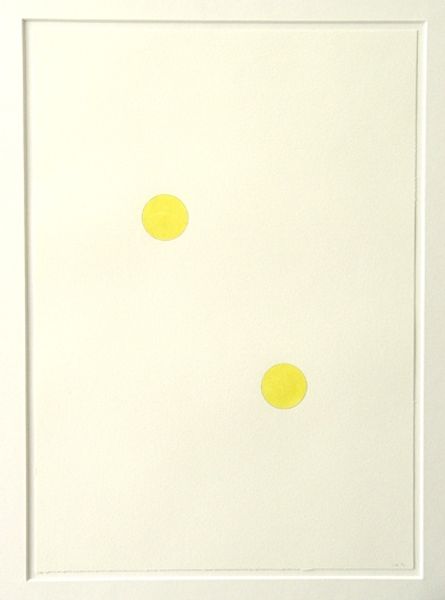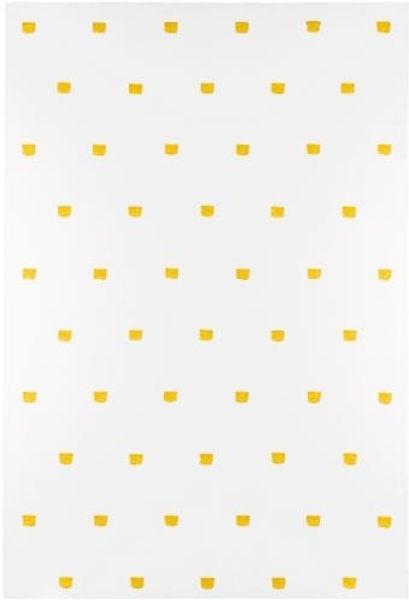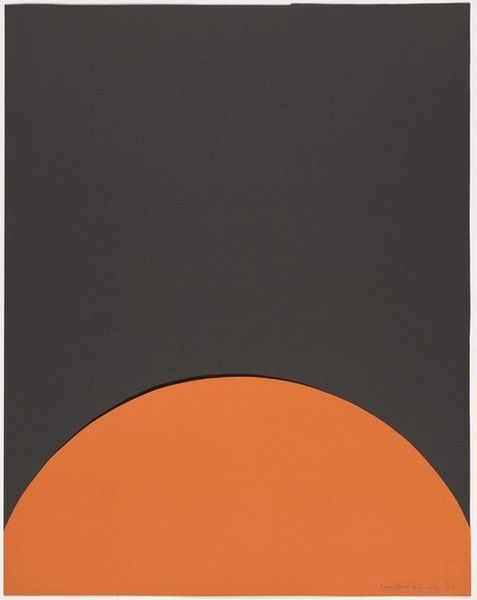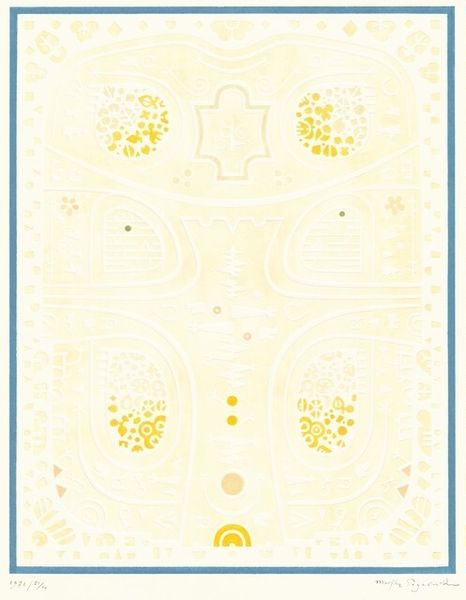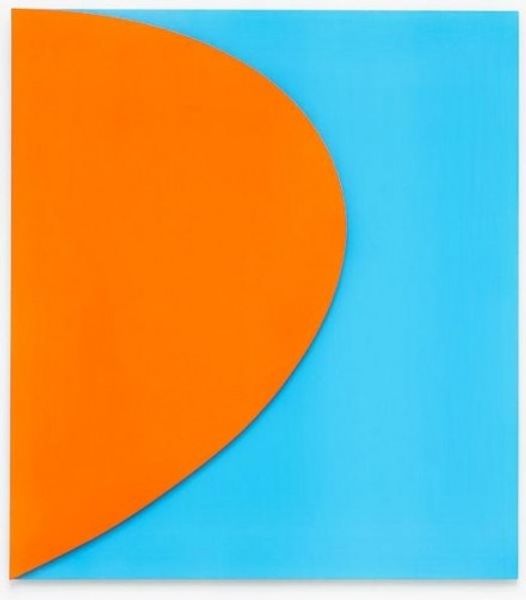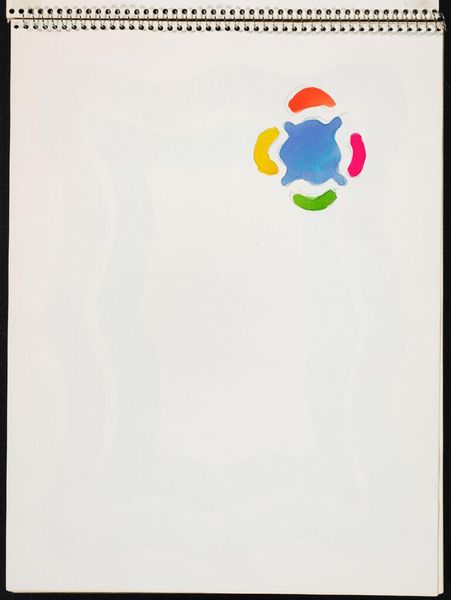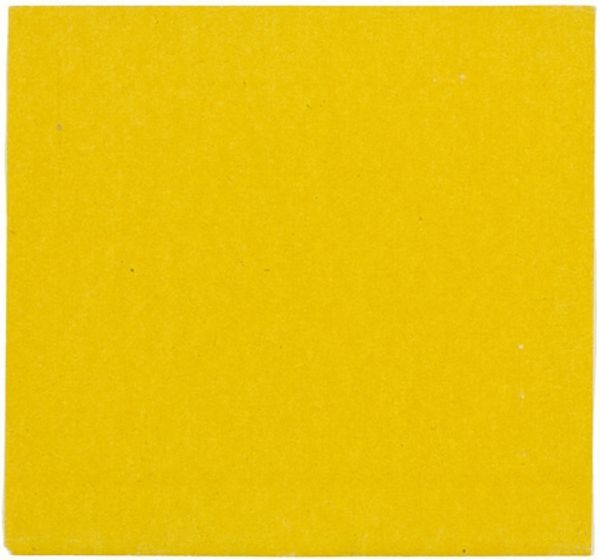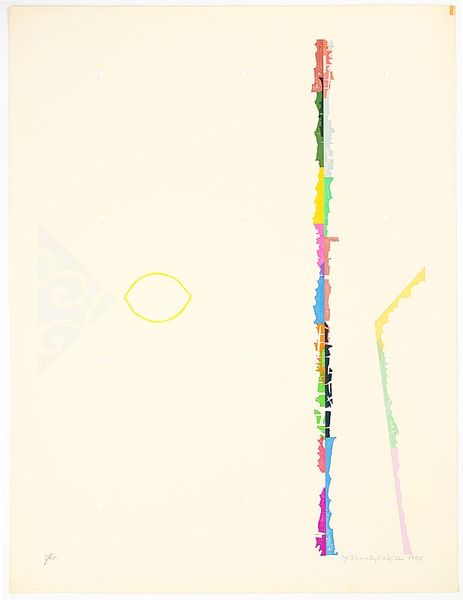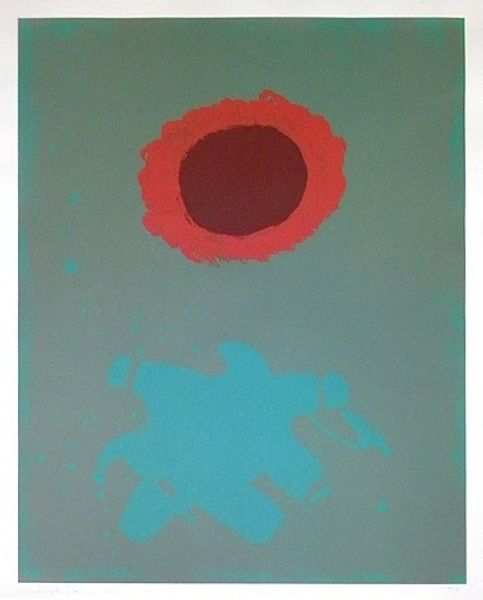
Copyright: Adolph Gottlieb,Fair Use
Editor: We’re looking at Adolph Gottlieb’s “Black Note” from 1971, rendered in acrylic paint. I’m really drawn to the simplicity, yet something about it feels like a secret code. What’s your read on this painting? Curator: It's fascinating to consider Gottlieb within the context of post-war America. His move towards these simplified, almost symbolic forms reflects a broader cultural desire to find new languages for expression after the trauma of war. Think about the influence of the New York School and how artists grappled with depicting the un-depictable. What kind of power dynamics might you be inferring from this composition? Editor: I see how those simple geometric forms—a circle, a starburst shape, and those little lines at the bottom—stand for a mood, even with no subjects at all, but…power dynamics? Curator: Yes, consider that Gottlieb's work exists within the cultural context of expanding art institutions and debates surrounding accessibility. Do you think this apparent simplicity makes it more accessible, or does it create a different kind of barrier to understanding for viewers accustomed to more traditional forms? How do you think a work like this engaged with ideas of "high" and "low" art circulating at the time? Editor: I hadn't thought about that before. I guess its simplicity could be deceiving. I can imagine people arguing about its meaning and worth, which kind of establishes the canvas itself as a point of contestation for cultural values. It's amazing that this artwork can speak to larger sociopolitical ideas like that. Curator: Precisely. By engaging with those debates, “Black Note,” as seemingly abstract as it is, becomes a reflection of the power structures inherent in the art world and society at large. Considering these things has shown me that an individual can make very loaded commentaries within non-objective constraints.
Comments
No comments
Be the first to comment and join the conversation on the ultimate creative platform.
